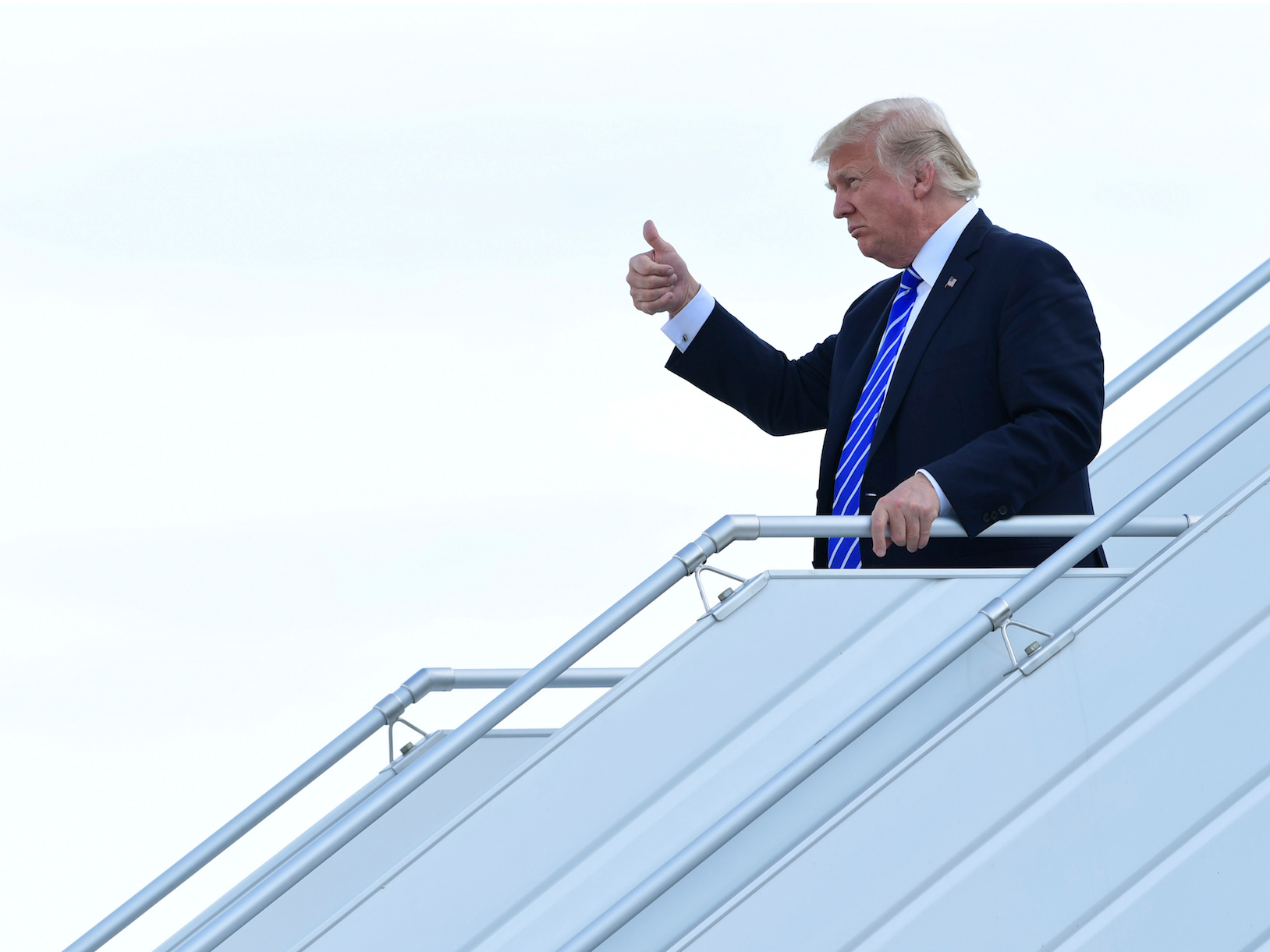- President Donald Trump’s tax plan proposes simplifying the seven tax brackets we have now down to four. Tax brackets under the new plan would be 12%, 25%, 35%, and 39.6%. The standard deduction would increase to $12,200 for single filers and $24,400 for joint filers.
The long-awaited details of US President Donald Trump’s tax plan are finally beginning to emerge.
On Thursday, House GOP leaders revealed the “Tax Cuts and Jobs Act,” which Trump has said he wants finalized and on his desk before Christmas.
One tax-reform theme has been consistent since the days of candidate Trump: The federal income-tax brackets could be simplified from the seven we have today.
Trump's tax plan proposes four federal income tax brackets: 12%, 25%, 35%, and 39.6%.
The chart below shows what we know so far about how Trump's tax plan could change federal income-tax brackets compared to 2017 tax brackets. Click the "joint filers" button to see adjusted numbers for joint filing status.
Most Americans -about 70%- claim the standard deduction when filing their taxes. For those who do, their paychecks will almost certainly increase if Trump's tax plan passes, thanks to proposed tweaks to the current standard deduction and tax brackets.
In 2017, the standard deduction for a single taxpayer is $6,350, plus one personal exemption of $4,050. The new proposal essentially combines those into one larger standard deduction: $12,200 for an individual, and $24,400 for joint filers.
Under the latest proposal, many deductions would be eliminated, including the state and local income tax deduction and the student loan interest deduction. The mortgage interest deduction would be cut in half, affecting home buyers in expensive housing markets. Taxpayers will still be able to deduct 401(k) savings, however.
After multiple failed attempts to overhaul the US healthcare system, tax reform could take center stage. Or it could face the same fate. Only time will tell.
"We have to acknowledge that any effort to cut or reform taxes is inevitably more complicated than tackling healthcare," Mark Hamrick, the senior economic analyst at Bankrate.com, said in an email. "Healthcare involves around one-sixth of the US economy, while taxes covers pretty much everything. That makes the broader fight even larger and more complicated."
Trump's tax team - which includes House Speaker Paul Ryan, Senate Majority Leader Mitch McConnell, National Economic Council Director Gary Cohn, Treasury Secretary Steven Mnuchin, Senate Finance Committee Chairman Orrin Hatch, and House Ways and Means Committee Chairman Kevin Brady - has its work cut out.










